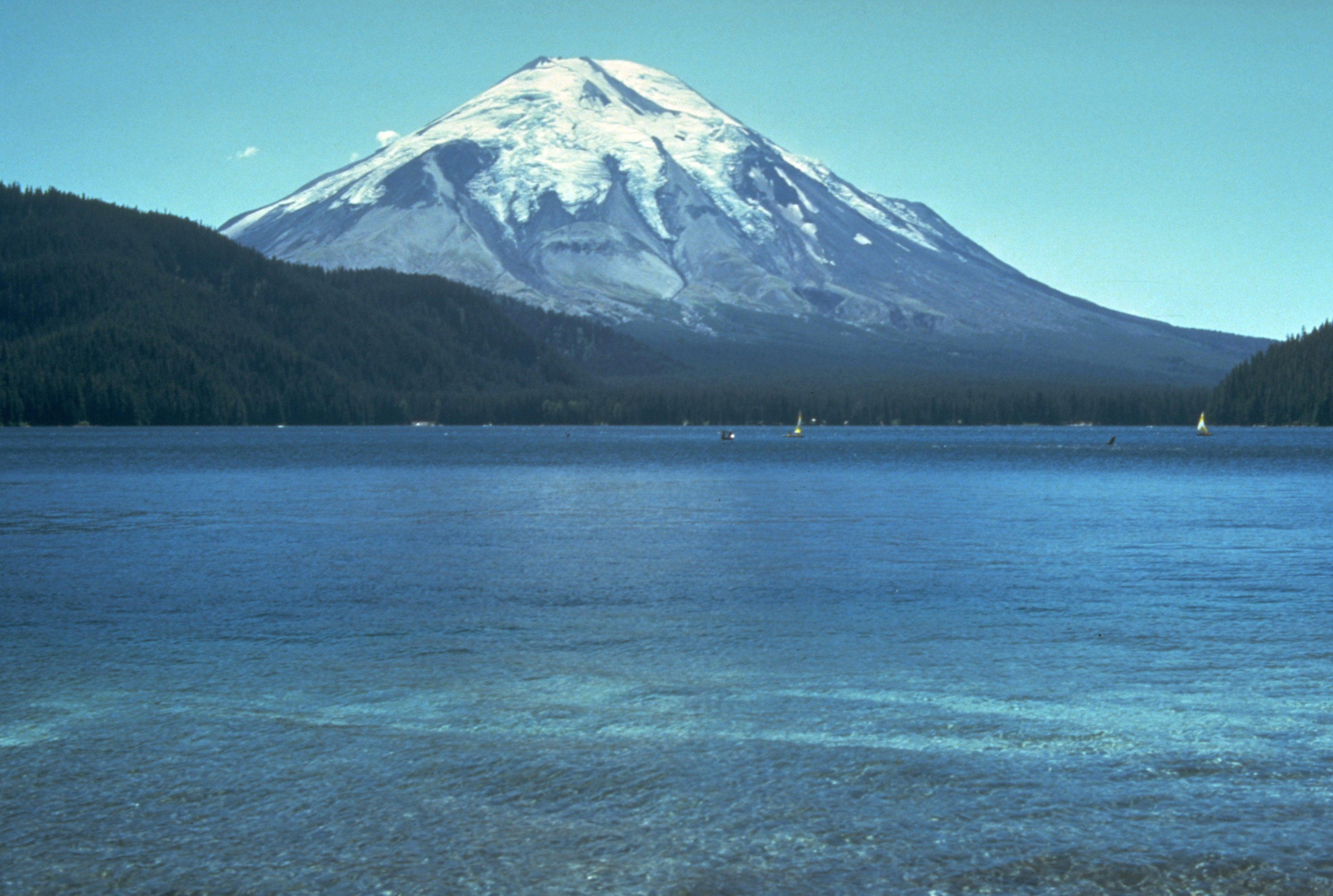Remembering the Mt. St. Helen's Eruption in May 1980
We first viewed Mt. St. Helen's from the Johnston Ridge Observatory, where, back in May 1980, a vulcanologist named Johnston was monitoring the bulge that had been building for many weeks on the north flank of Mt. St. Helen's. An evacuation had already been ordered for much of the area around Mt. St. Helen's,
including from many resorts and homes around Spirit Lake at the base of
the mountain, in anticipation of the eruption within just a few days. Johnston, alone on this ridge about 5 miles from the north flank of the mountain, along with some other 57 people who did not evacuate, were believed to be beyond the range that would be affected by the eruption. Unfortunately, they were not. The eruption, unexpectedly, did not explode vertically from the top of the mountain but rather laterally from the north flank. The blast resulted in a super-heated debris-filled wind believed to be moving at 300-500 miles per hour moving toward in a northerly arc. It was so powerful it destroyed everything in its path, and blowing down virtually EVERY tree in its path over an area of 230 square miles. The avalanche traveled as far as 13 miles, and a mudflow caused by the instant melting of snow flowed down river valleys as far away as 75 miles. The mountain lost about one third of its original 9600-ft. height in the blast.
Mt. St. Helen's before 1980 eruption viewed from Spirit Lake.
Mt. St. Helen's after the eruption from Spirit Lake. Note that the surface of Spirit Lake permanently rose about 200 feet because of the avalanche debris that flowed into the lake. A popular tourist destination with several resorts and vacation homes before the eruption, the lake's rise buried all of the developments around the lake, killed life within the lake, and left the lake full of blown-down tree trunks that fell into the lake.
View of part of the "blow-down" area soon after the 1980 eruption. Note that the trees are lying uphill, indicating the direction of the blast from the volcano.
Some of the "blow-down" area as we saw it yesterday, more than 34 years later.
More of the blow-down area that we saw.
Mt. St. Helen's as we saw it last week and the devastation of the valley below from Johnston Ridge. The crater is filled up somewhat, compared with the above image, because of several smaller eruptions that have taken place over the past 34 years bringing more material to the surface. Notice that there is a small amount of vegetation now showing on what was previously just a mud plain. Within the boundary of the St. Helen's National Monument, the forest service has not attempted to affect the recovery of the land, like planting trees, because they want to study the processes of natural recovery.
Spirit Lake as we saw it on a hike yesterday. Note that the white-ish mass in the foreground of the photo are the blown-down tree trunk still floating on the lake.
Rainier National Park
Mount Rainier, above, at over 14,000 feet, towers over all other mountain peaks in the Cascades as well as the city of Seattle itself. A currently dormant volcano, it has not erupted in 2500 years. There are 25 major glaciers streaming down from the top of the mountain. (This makes Glacier National Park in Montana, with no major glaciers left nowadays, look misnamed.) What seems like snow seen in this photo taken by us in August 2014, is actually several of those glaciers.
We took a hike on a trail in Rainier NP in what is called the Grove of the Patriarchs, site of an old-growth forest, within which were very old and huge trees, some more than 1000 years old!
Barbara, above, tries to hug one of the biggest, if not the biggest of the old-growth trees in the grove. Gives you an idea of how big it really is.
Barbara with the root system of one of the old trees, now toppled. We saw more than one amazing giant set of roots along the path in the grove.
On a lighter, less-educational note
Everywhere we go, people - especially kids - always make a fuss over Pepe. This typical scene, happened in Poulsbo, Washington, a cute little tourist port town we visited.
While in Port Townsend, we bought a work of art at a local art show called Two-Heart Shovel. The gallery director insisted on taking this photo of us which she dubbed "American Gothic, circa 2014".



.JPG)
.JPG)
.JPG)
.JPG)
.JPG)
.JPG)
.JPG)
.JPG)
.JPG)
.JPG)

Fantastic post! Mt. St. Helen's and Ranier are definitely on our list.
ReplyDeleteLove "American Gothic, circa 2014".